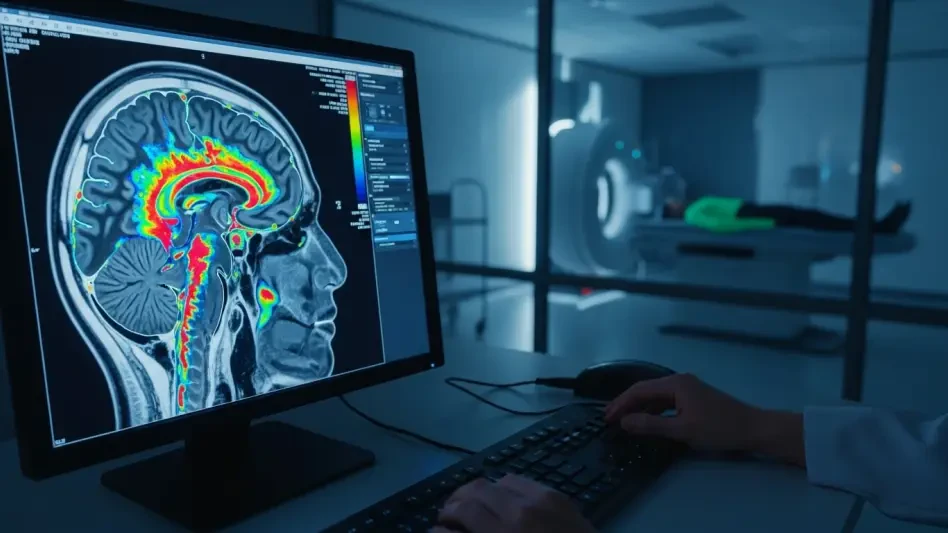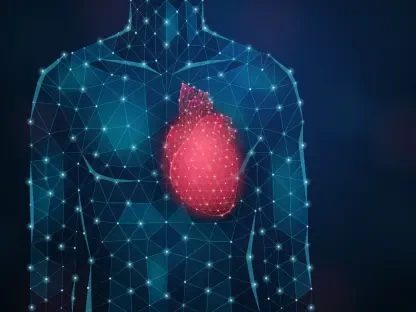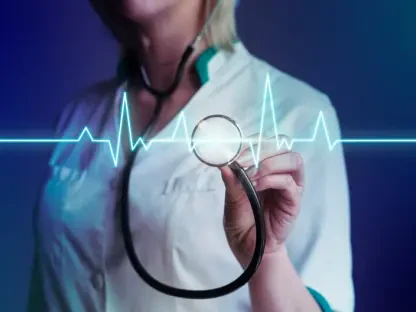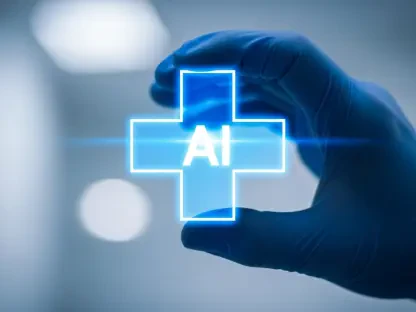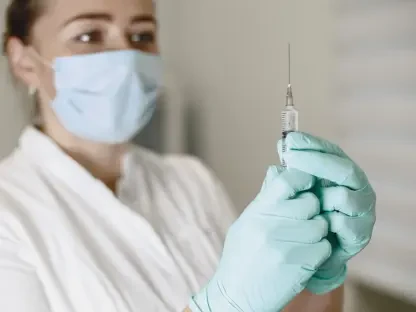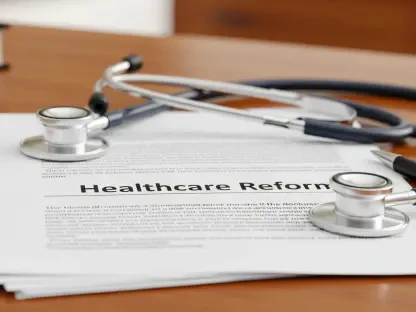In the realm of medical technology and diagnostics, Faisal Zain stands out as a beacon of innovation and expertise. Specializing in the manufacturing and development of medical devices, Faisal has been instrumental in advancing medical research tools. In this interview, we explore the intricacies of the UK Biobank’s monumental whole-body imaging project and its implications for the future of healthcare.
Can you walk us through the history and motivation behind the UK Biobank imaging project?
The UK Biobank imaging project is rooted in a vision to redefine the landscape of health research by providing an expansive, long-term dataset that captures diverse health markers. The motivation was to create a comprehensive resource that could enable breakthroughs in understanding disease mechanisms and prevention strategies. This idea took shape over 15 years ago, driven by the need to collect data that could answer large-scale health questions that smaller studies couldn’t tackle effectively.
Why was the focus on whole-body imaging, and what made the 15-year timeline feasible for achieving your goals?
Whole-body imaging was chosen because it offers an unparalleled view of the human body, allowing researchers to examine the interconnectedness of different systems and organs in a way that isolated studies cannot. The 15-year timeline was feasible due to strategic planning, robust funding, and the collaboration of a dedicated team. Such a comprehensive project required sustained effort and commitment, paired with continuous technological advancements that made data collection and analysis more efficient over time.
What made 100,000 volunteers step forward for this ambitious project, and how were they selected and motivated?
The volunteers were motivated by a shared desire to contribute to something larger than themselves— the prospect of advancing scientific knowledge and future health implications. Recruitment focused on ensuring a diverse cohort, representing various demographics to enhance the dataset’s robustness. Participants were continually motivated through clear communication about the project’s goals and the potential impact their contributions could have on public health.
What specific technologies and techniques were used during the five-hour imaging sessions for each participant?
During these sessions, cutting-edge Magnetic Resonance Imaging (MRI) technology was employed, alongside ultrasounds and comprehensive body scans. These imaging modalities offered detailed insights into organ structure and function. Each technique was selected for its ability to provide specific data points that, when combined, offered a holistic picture of the participant’s health status.
Can you elaborate on the variety of imaging techniques used, such as Magnetic Resonance (MR) imaging and ultrasounds, and what each contributed to the project?
MR imaging was pivotal for assessing soft tissues and organs like the brain and heart, providing exceptional detail on their structure and health. Ultrasounds were used for evaluating blood vessels, offering critical data on vascular health and circulation dynamics. These techniques, alongside measurements of bone density and body fat from comprehensive scans, allowed for a multi-dimensional approach to health data collection, crucial for detecting subtle changes and disease markers.
How is the data collected being used to advance disease research, particularly with AI models?
The dataset has become a crucial asset for building AI models that can predict disease risk and detect early abnormalities. By using machine learning algorithms, researchers can analyze large-scale imaging data to uncover patterns linked to diseases like Alzheimer’s or heart conditions. These models enhance our ability to identify at-risk individuals and tailor preventive strategies more effectively.
Could you explain the process of developing an AI model for a healthy heart and how this helps in disease detection?
Developing an AI model for a healthy heart involves training the model on vast amounts of imaging data to recognize what a typical healthy function looks like. Once established, this model can quickly identify deviations from this baseline, indicating potential health issues early on. This early detection allows for timely intervention, potentially preventing disease progression or complication.
What are some of the significant findings relating to the connection between different organs like the heart and the brain?
One of the fascinating findings from the UK Biobank project is the intricate link between cardiovascular and neurological health. The data has revealed that changes in heart health often correspond with brain health alterations, suggesting that monitoring cardiovascular indicators could provide early warnings for neurological conditions. This interconnected insight reshapes how we approach disease management holistically.
How does the realization that our organs might age biologically at different rates reshape our understanding of age-related diseases?
Understanding that organs can biologically age at different rates shifts our focus from chronological age to biological age as a metric of health. This perspective encourages more individualized healthcare approaches, as patients might benefit from personalized monitoring and interventions based on the biological state of their organs rather than their chronological age alone.
Could you elaborate on how this massive imaging project is more than ten times larger than any prior studies, and what advantages this offers researchers?
The sheer scale of this imaging project, being more than ten times larger than previous efforts, provides an unprecedented volume of data, enhancing the statistical power and reliability of research findings. It allows researchers to identify rare disease patterns and understand variability in health outcomes across different populations, which smaller datasets cannot accommodate sufficiently.
How does the rapid analysis of heart scans, which can be done in under a second, change the landscape of medical research?
Rapid heart scan analysis transforms research by significantly speeding up data processing, which accelerates the pace of discovery and innovation. This capability allows for real-time monitoring and analysis, making it feasible to integrate findings swiftly into clinical practice and decision-making, ultimately improving patient care outcomes.
How has the project’s scale influenced the volume and impact of peer-reviewed scientific papers?
The extensive scale of the project has resulted in a wealth of data that has dramatically increased both the breadth and depth of scientific inquiry. To date, over 1,300 peer-reviewed papers have emerged from this research, each contributing new insights into varied aspects of human health, disease mechanisms, and potential interventions. This flood of high-quality research elevates the project’s impact on the scientific community and beyond.
In what ways have volunteers been crucial to the success of this imaging project?
Volunteers are the cornerstone of this project’s success, enabling the creation of a diverse and comprehensive dataset that reflects a wide spectrum of health profiles. Their commitment provides the foundation for groundbreaking studies and discoveries, underscoring the essential role of public engagement in advancing scientific knowledge.
How does the integration of lifestyle and health data with imaging results offer a comprehensive view for personalized medicine?
The fusion of lifestyle data with imaging results enriches our understanding of how environmental and personal factors influence health outcomes. This integrative approach allows for a more personalized view of health, helping tailor interventions and preventions to suit individual needs and preferences, ultimately advancing the field of personalized medicine.
As the dataset continues to expand, what do you think are the most promising future applications or breakthroughs in healthcare?
As the dataset grows, it opens new possibilities for linking genetic, lifestyle, and imaging data to predict and prevent diseases more accurately. The future holds promise in honing precision medicine approaches, refining AI-driven diagnostic tools, and potentially unlocking novel therapeutic pathways that could transform patient care on a global scale.
What role do you foresee the UK Biobank playing in transforming global healthcare, and what challenges do you anticipate overcoming in the future?
The UK Biobank is poised to redefine global healthcare by serving as a model for large-scale data integration in health research. Its comprehensive nature offers invaluable insights into disease prevention and management. However, challenges remain in ensuring data privacy, securing sustained funding, and adapting to emerging technological advancements—issues that require ongoing attention to preserve and expand this pivotal resource’s utility and impact.
